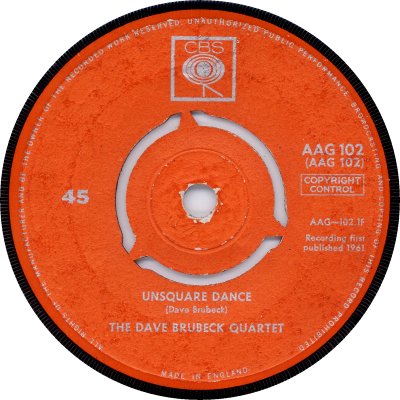
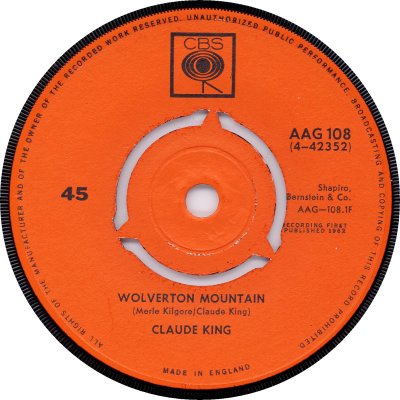
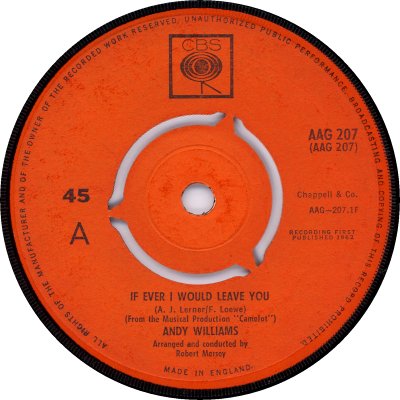
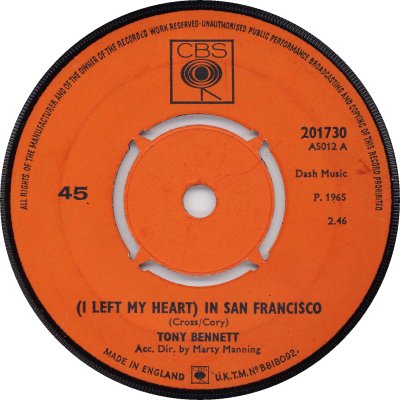
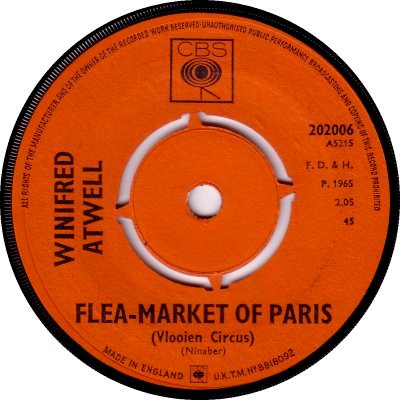
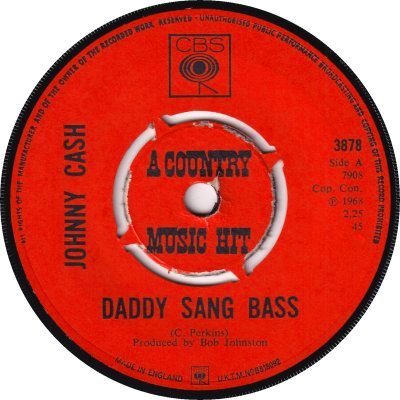
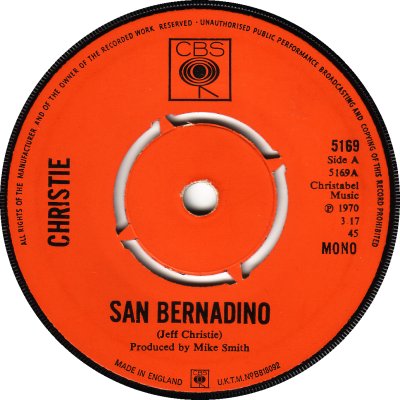

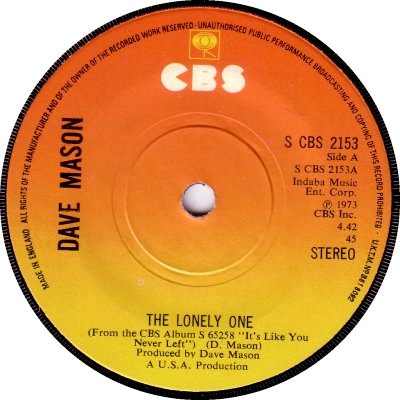
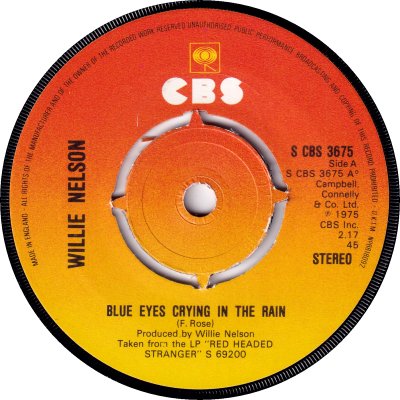
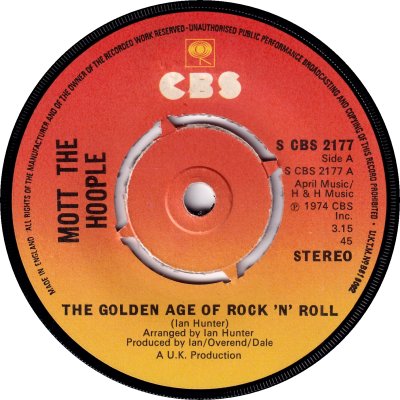
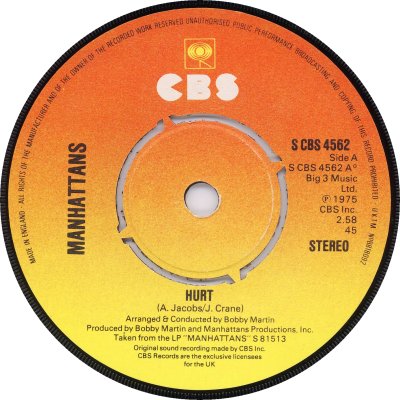
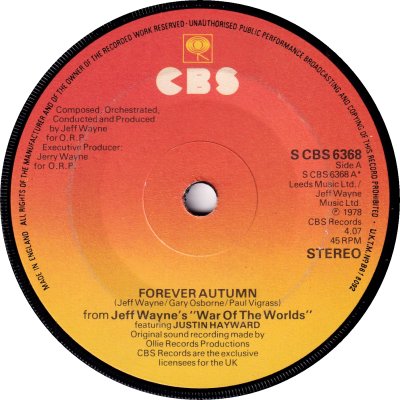
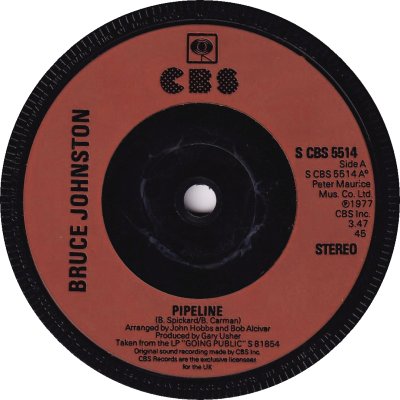
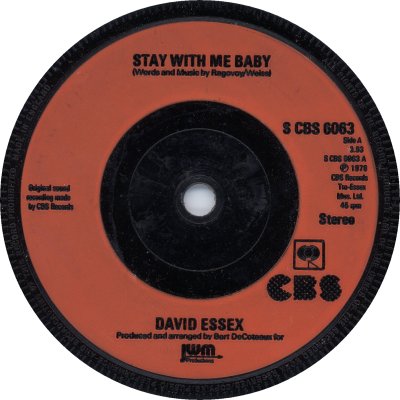
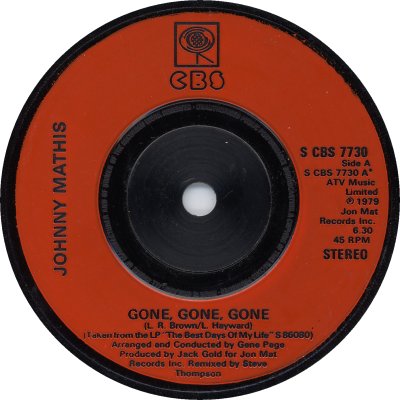
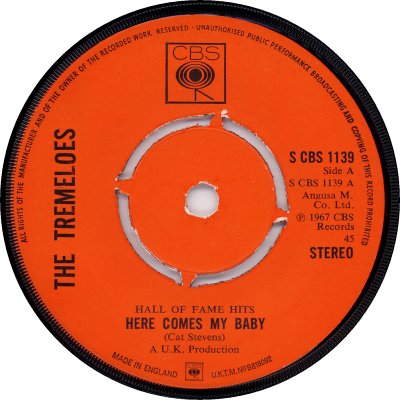
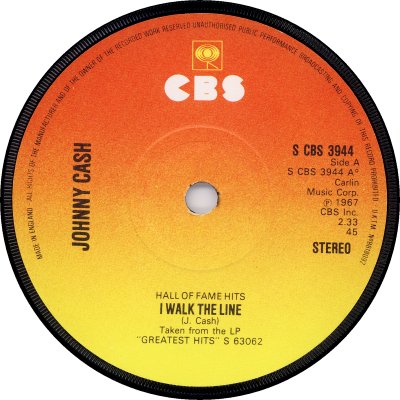
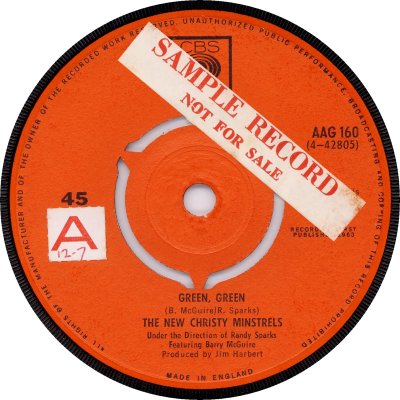

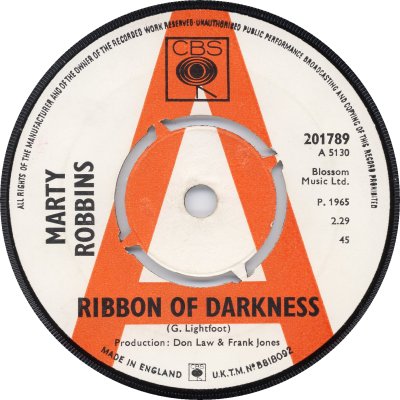
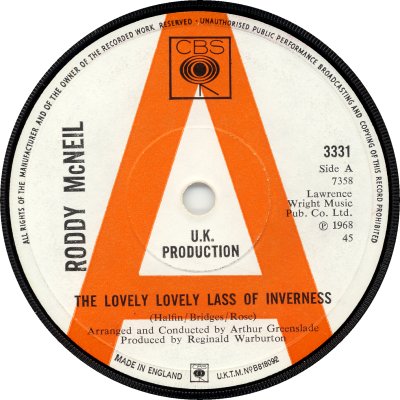
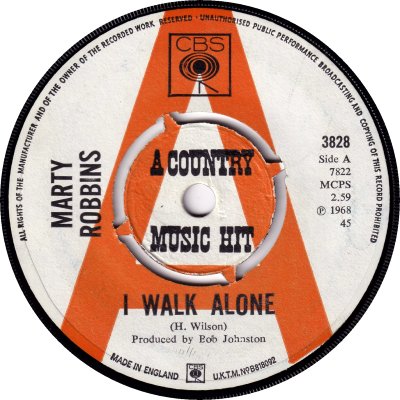
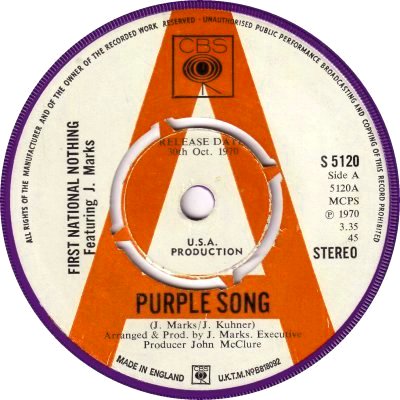
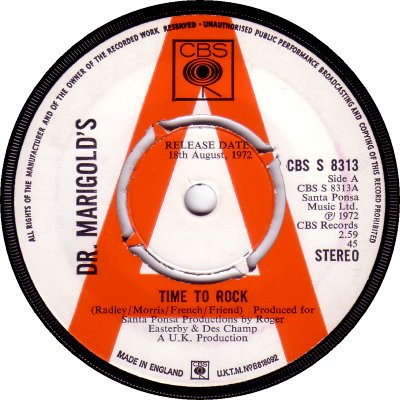
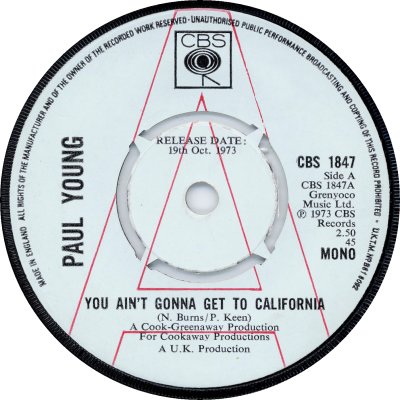
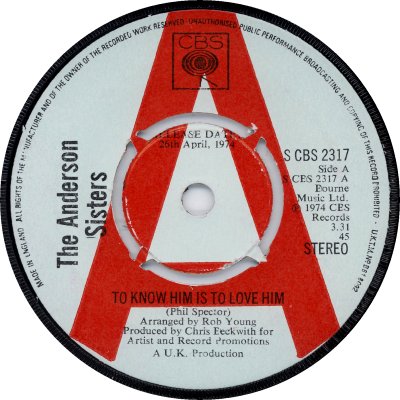
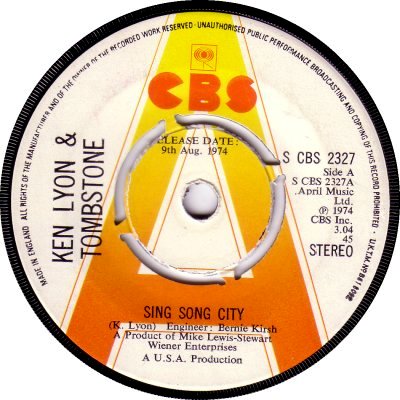
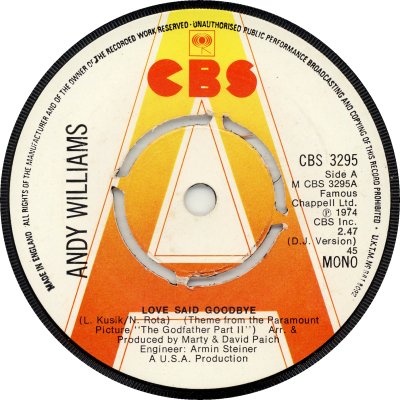
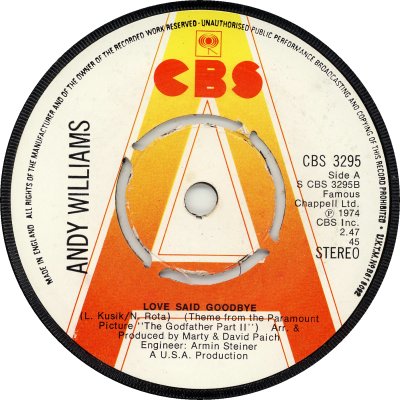
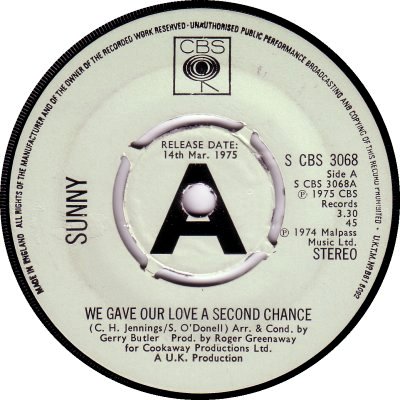
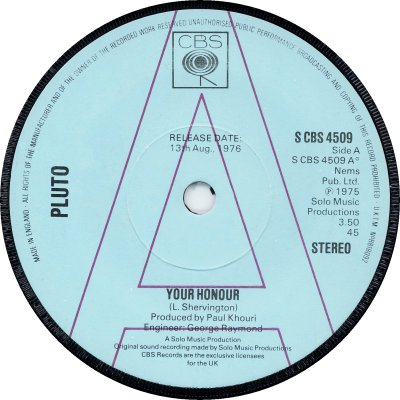
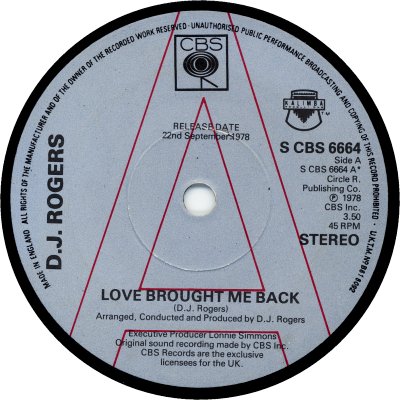
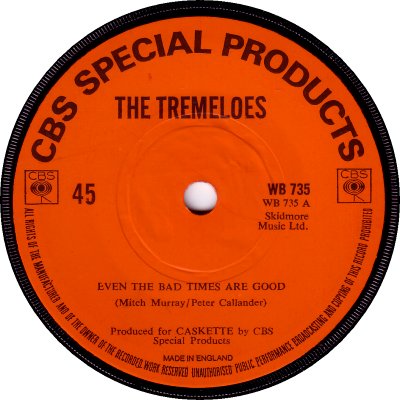
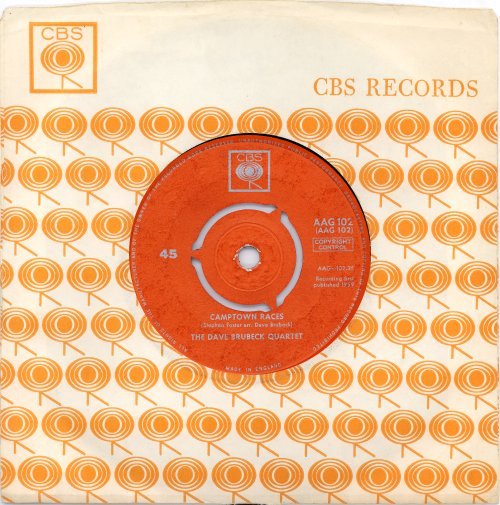
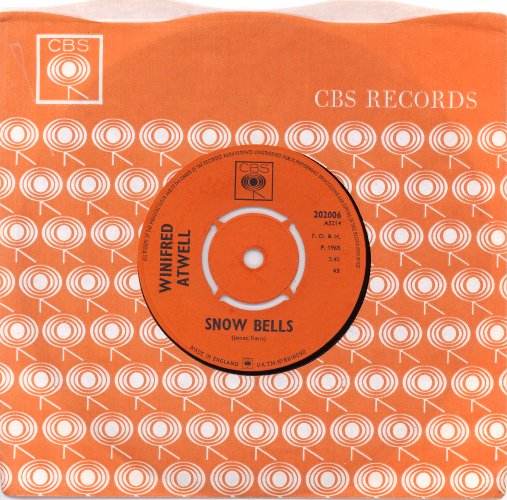
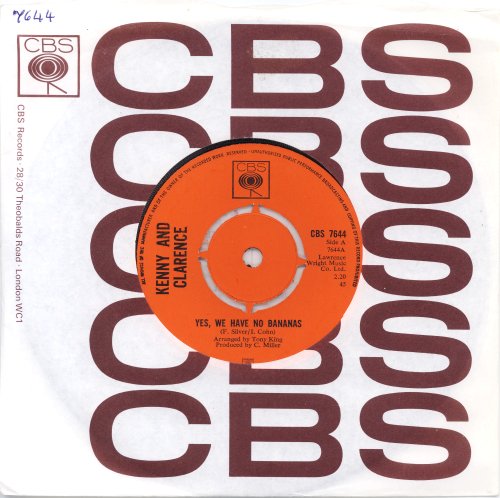
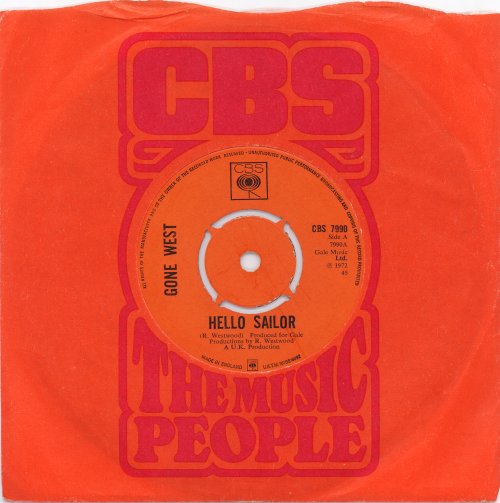
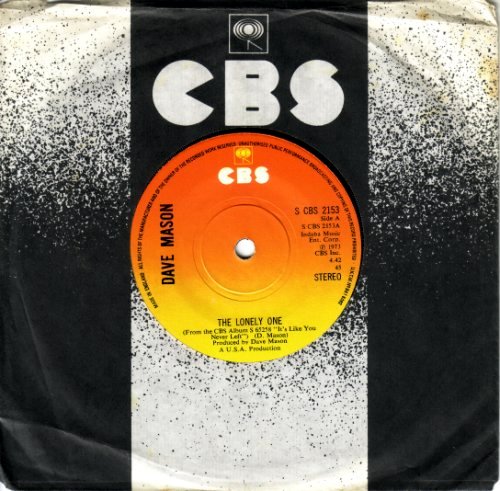
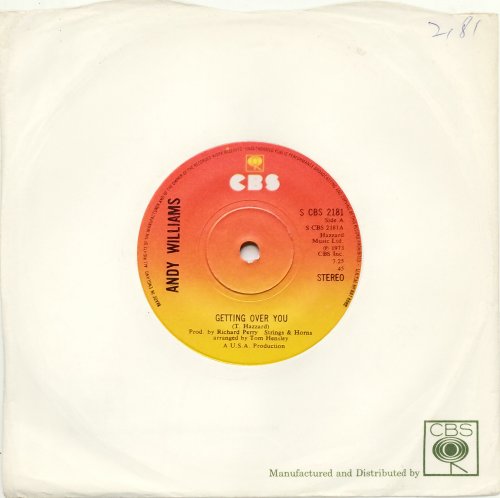
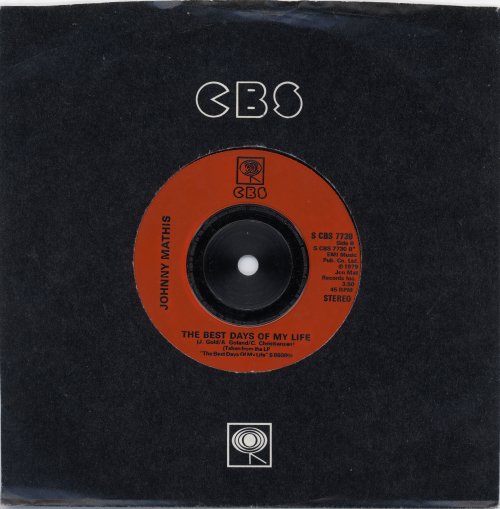
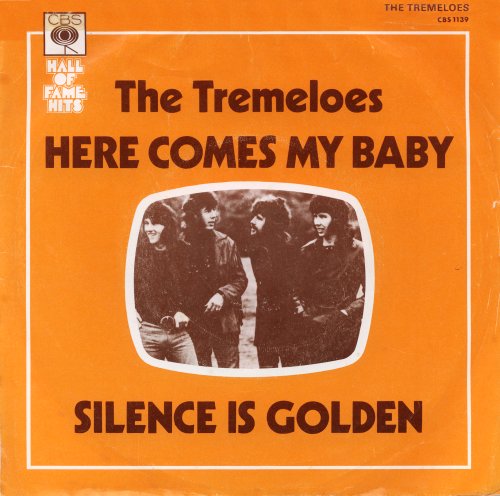
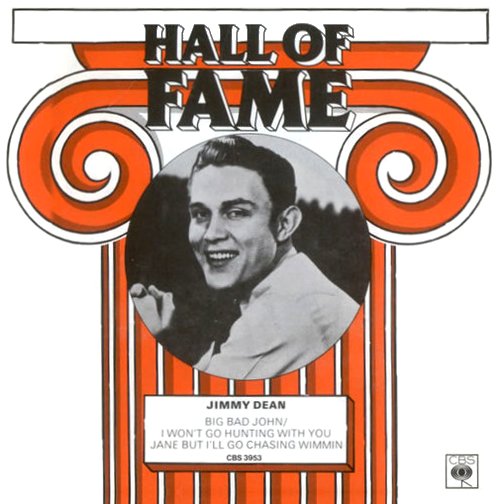
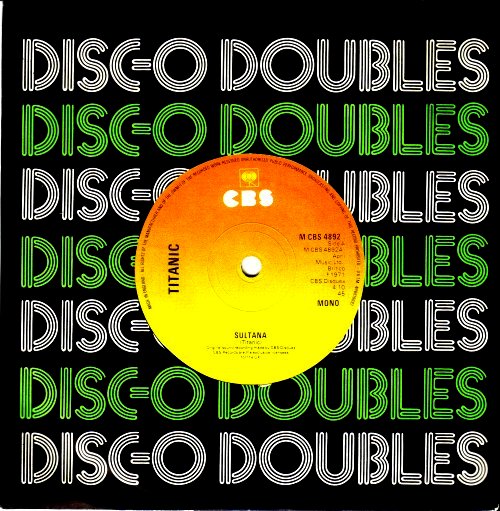
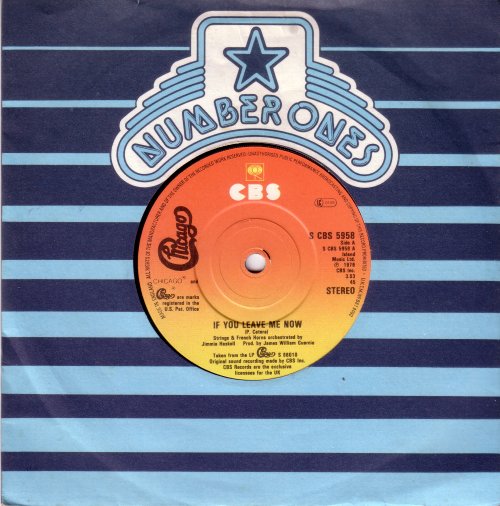
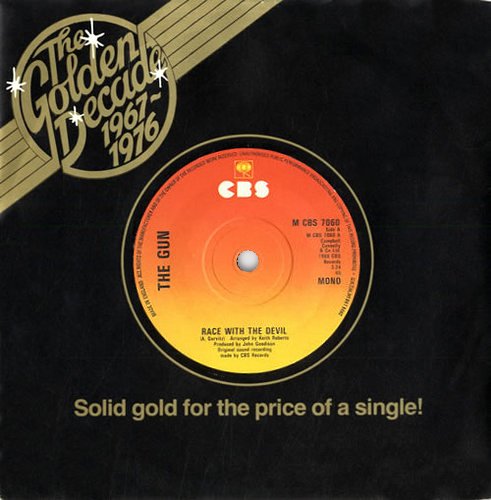
The British imprint of the giant American company Columbia Broadcasting Systems, which can make the proud claim that its engineers invented the LP record (in 1948). The company started life in the States as the Columbia Phonograph Co. in 1887. It flourished for more than three decades, and set up branches in several other countries. In 1923, however, it hit financial troubles and went into receivership. The British subsidiary was sold; as Columbia, it later became part of EMI. In the USA Columbia ended-up in the possession of William S. Paley, founder of Columbia Broadcasting Systems. Under Paley the company's fortunes improved. Big Bands such as those of Benny Goodman and Count Basie helped swell the coffers; through the 1950s and the early '60s the company built up a reputation as a MOR label, thanks to the likes of Andy Williams, Tony Bennett and Barbara Streisand. Under the influence of A&R man John Hammond Columbia changed direction in the '60s, signing Bob Dylan, the Byrds, and Simon & Garfunkel among others, and exploring the new horizons of Folk-Rock. When Clive Davis became president of the company he pushed the musical boundaries further in the direction of Rock and Country music; after he left Columbia continued to grow, taking the Jazz/Fusions and Disco scenes in its stride. Thanks to Bruce Springsteen and others, the '80s were equally rewarding. In 1987 Columbia was sold to Sony; Sony went on to purchase EMI's Columbia label, thus reuniting parent and child after a break of some seventy years.
In Britain, US Columbia initially had a licensing agreement with EMI, but in 1952 'Billboard' of the 21st of May revealed that the company intended to license its products to the newly formed Philips company instead (q.v.). The switch duly took place, and from the end of January 1953 Columbia recordings appeared on the Philips label, Pop ones in the 10" 78rpm format. Product from Columbia's subsidiary Epic came out on Philips's new 'Fontana' label (q.v.) from August 1957, as indeed did some from Columbia itself ('Billboard', 9th March 1957), again mainly as 78rpm or on 7" 45rpm EPs. Though its 7" EPs debuted in 1955 Philips was slow to issue its Pop singles in 7" form, and the first of them didn't appear until 1958.
Having established a foothold Columbia was keen to have its own label identity here, and in 1962 it finally got it. 'BB' of the 27th of January announced that Columbia and Philips had struck a two-year deal and that the new label would make its debut in May. Thanks to the 1923 purchase EMI had the rights to the name 'Columbia' over here, so a new name had to be decided upon; it turned out to be 'CBS'. When CBS made its debut as a label its singles numbered in the AGG-100s and EPs in the AGG-20000s; as per the agreement, pressing, marketing and distribution were still handled by Philips. The company had further ambitions, however, and was heading for independence. In September 1964 it bought the British company Oriole and thus acquired pressing and distribution facilities of its own. The last Philips-handled CBS single came out in December 1964; after a slight gap the 1st of March 1965 saw CBS's records being distributed by the now-CBS-owned Oriole. Oriole was officially given a new name, CBS Records Ltd, a couple of months later, on the 1st of May that same year.
CBS enlarged the old Oriole distribution system but it still proved insufficient, and from 1966 distribution was shared with EMI ('Record Retailer', 4th April 1970). The system must eventually have been enabled to handle requirements; 'RR' of the 20th of March 1971 reported that when the part-distribution agreement ended, on the 30th of June, it would not be renewed. The day after the agreement with EMI ended, the 1st of July 1971, CBS and Kinney entered into a joint pressing and distribution pact, which initially covered a three-year period ('RR', 20th March 1971). In the event the arrangement proved successful, and it only ended in 1977, by which time Kinney had changed its name to WEA.
CBS flourished as a major manufacturer and distributor of records. As well as issuing thousands of singles on its own CBS label it was home to a number of other successful labels, most notably (in the years with which this site is concerned) its offshoot Epic and Philadelphia International. The British branch of CBS contributed to the label's roster of successful artists by signing such diverse acts as the Clancy Brothers, the Tremeloes and David Essex. Whether operating in the fields of Pop, Rock, Disco, Funk, or Soul, CBS shifted bucketloads of records on both sides of the Atlantic; it was equally active in the Classical Music sphere. A list of notable CBS artists would be a long and varied one, with people like Miles Davis at one end and the Wombles at the other, with Johnny Cash in the middle; while the Epic label boasted such mega-sellers as Abba and Michael Jackson. It wasn't all success: in common with the other majors CBS put out a huge number of singles and scored with comparatively few - their ratio of hits-to-releases couldn't compare with that of, say, RAK in its heyday. Still, successes there were, in some profusion.
CBS used only three different labels during the '60s and '70s. The first one, during the Philips era, was plain orange. Until September 1962 it had silver printing (1); from that time the printing turned to black, presumably for the sake of legibility (2). AAG-116 was the first single to start off with black printing, but re-pressed copies of earlier records also had it. Push-out centres had three prongs, after the usual Philips fashion. From July 1964 to September of that year labels had a small 'A' or 'B' on the appropriate side (3). With independence, in March 1965, the layout of the labels remained the same for the first month or so (4), but the catalogue numbers changed, becoming 200000 for singles and EP-6000 for EPs. In April there was a drastic change of layout, with the artists' names turning 90% and moving to 9 o'clock; the font size increased for both the artists and titles (5). This design proved durable (7, 8): it lasted until February 1974, at which point it was replaced by a rather brighter orange-and-yellow 'sunburst' design (9-13), which saw out the decade and continued on into the early '80s. From December 1968 to March 1969 a few Country singles which had been succesful in America were given 'A Country Hit' overprints (6, 23).
In March 1976 CBS began pressing its singles with their centres removed and sending them out with 'spiders', but 'Music Week' of the 1st of May reported that adverse reaction from dealers had led to the experiment being abandoned - according to the dealers their customers preferred the standard small-spindle-hole type. The article said that large spindle holes would have made stock transfer with abroad easier and would have meant that singles ordered for juke boxes no longer had to have the large hole cut 'cold', a process which had a 50% failure rate. It added that all CBS singles had previously been pressed with solid centres, which wasn't completely accurate - the company only seems to have largely discontinued the practice of giving singles 'dinking perforations' on issues from 1974 onwards and on promos from August 1975. After the experiment had been abandoned the vast majority of singles continued to have solid centres, though some popular records can be found with push-out centres, as had been the case previously. The following year saw another experiment: 'MW' of the 17th of August 1977 broke the news that CBS were testing an injection moulding process. A spokesman for the company said that for a couple of months injection moulding had been used on a variety of singles including most of its Chart hits; he added that the process was only being used on parts of pressing runs and that there was no question of CBS having a mass switchover. Injection moulded singles continued to appear sporadically into the 1980s. Initially the logo on them was at 12 o'clock (14); it migrated to 4 o'clock in January 1978 (15) and stayed there until the start of 1979, when it returned to the top, now with the 'prohibits' around the spindle hole rather than around the label itself (16). As can be seen, the various credits also moved. During the '60s - and the '70s? - it was possible for companies in other lines of business to license CBS records to give away with their own products; these specially-pressed records had their own 'CBS Special Products' label and their own catalogue series, WB-700 (3). For some time CBS offered custom pressing facilities; there was an advert to that effect in 'RR' of the 24th of January 1970.
Promo labels showed rather more variation than the issue ones. Philips-era promos were marked with a 'Sample Record' sticker, sometimes accompanied by a smaller sticker with an 'A' on it (19). Independence saw dedicated promo labels used: they were white with a large orange 'A'. Briefly, in the first month of introduction - March 1965 - the 'A' had a serif (20), but it soon lost it and fattened out (21). From April 1967 until October 1971 promo copies of singles which were produced in the UK or in the USA were marked accordingly (22, 24). Release dates began to be added in January 1969 and continued after the loss of the producuion credit (25). In May 1974 the orange 'A' was replaced by an orange-and-yellow 'sunburst' one (28) some three months after the issue labels had undergone a similar change. From September 1973 other kinds of promo labels began to be mixed in with the main type. A few singles between September and November had light grey ones with a hollow red 'A' (26), while from February 1974 until May of that year a handful had darker grey labels with a solid red (occasionally orange) 'A' (27). May 1975 saw the introduction of a creamy-grey label with a smaller central black 'A' (31); still interspersed with the main orange-and-yellow-big-'A' type, these were used until around August of that year. At that point the large hollow 'A' design made a comeback, this time on light blue-grey labels (32). The creamy-grey-small-'A' type reappeared in May 1976, though the hollow 'A's made an occasional appearance. The Hollow 'A's, which came in various shades of blue-grey (33), replaced the creamy-grey-small-'A's from June 1978, but their triumph was short-lived: they disappeared in December 1978, from which point all promos had the 'Solid sunburst 'A'' labels. Late 1974 through 1975 saw CBS putting out special promo singles with a mono 'DJ Version' mix of the issue 'A' on one side and the standard stereo mix on the other (29, 30). Towards the end of 1975 these were replaced by singles featuring an edited version on one side and the 'long' version on the other, both in stereo. Phew.
Several different company sleeves were used: the orange-on-white one (35) was the first to appear; it was soon replaced by a white-on-orange one in much the same design (36). This lasted until 1967, when a white one with brown lettering (37) came in. In 1971 a rather psychedelic purpley-red-on-orange one (38) was introduced, which proved short-lived; the black-and-white stripey design (39) which succeeded it in 1972 proved longer lasting, giving way to a plainer black one (41) only in 1979. In or around 1974 singles occasionally came in white sleeves with a 'Manufactured and Distributed by CBS' credit (40). On occasions the company issued batches of its hit records, on its various labels, in distinctive sleeves, under a collective name. 'Hall Of Fame Hits' (1139-1168; 1973) were marked as such on the label and featured artists as dissimilar as Andy Williams and Sly & The Family Stone (17); a second 'Hall Of Fame Hits' series in 1976 featured several singles from the first series with the same numbers and marking but orange-and-yellow labels instead of the plain orange ones (18). It also included several records which had been hits since the first series came out - the new singles were numbered in the 3944-3967 block. The two series had different sleeves, the earlier being orange (42), the second white (43). The 'Disc-O Doubles' series (4879-4906) from January 1977 was for records that had proved popular in the discotheques, and was pressed in blue vinyl (44); while 'Number Ones' (5951-5975; 1978) featured reissues of singles that had reached No. 1 in the Charts (45) - they were given new catalogue numbers and new 'B' sides ('MW', 18th February 1978). Singles in these series had special sleeves no special label markings. Finally 1979 saw the appearance of a 'Golden Decade 1967-76' series which likewise had a dedicated sleeve but no special markings on the labels (46). In passing, it might be noted that CBS had a sleeve manufacturing affiliate, Shorewood Packaging.
The catalogue numbers of CBS singles were also fairly complicated. They started off with AAG-101 in 1962 and reached AAG-233 in December 1964; there was also an AGG-32000 series for EPs. With independence, in March 1965, the prefix was dropped and a 201700 numerical series was adopted. 'Record Retailer' of the 30th of March 1967 reported that the first two digits, '20', were to be dropped "from next week", in order to simplify invoicing and ordering. The numbers became simple four-digit ones; there were still no prefixes, but stereo releases were given an 'S' in front of the number. Prefixes finally reappeared in 1971, when the numbers jumped from 5500 to 7000; logically enough, the prefix was 'CBS'. The letter 'S' for stereo issues remained, separating prefix and number; confusingly some stereo singles were issued without the 'S' and in some cases where the 'S' was used it appeared before the prefix. The jump in numbers was necessary because the 6000 series had already been used, for a parallel series of EPs; these were prefixed 'EP'. Another jump followed in November 1972, this time a large backwards one from CBS-8500 to CBS-1000; that same month the 'S' for stereo moved in front of the prefix. For the remainder of the decade the numbers proceeded smoothly through CBS-2000, 3000, 4000, 5000, and so on; for mono singles the 'S' was either omitted or replaced by an 'M'. This state of affairs lasted into the 1980s, during which decade the prefix changed from 'CBS' to 'A' and I lost interest. The 'mono version / stereo version' singles from 1975 usually had an 'S' in the catalogue number of the stereo side and not on the mono one, though the example shown above is an exception.
Singles on CBS, Epic, Monument, Philadelphia International, etc, had different prefixes but a single shared numbering system, which doesn't make life easy for the would-be discographer. To complicate matters further, reissues of singles which originally had four-digit numbers sometimes kept their original numbers and at other times were given new ones. In addition, reissues of singles which originally had 200000 numbers lost the first '20' to reduce their numbers to four digits - for example, Bob Dylan's, 'Like A Rolling Stone', originally numbered 201811 in 1965, was re-numbered CBS-1811 when it was put out again in 1974. All the other CBS-1800s date from 1973. I have cobbled together a discography for the CBS label from 1970-79; it can be found below.
From the mid '60s through the '70s and byond, CBS was a major manufacturer and distributor of records, handling its own products and those of several other companies. On occasions however, demand for popular singles meant that it had to turn to other manufacturers for custom pressings. These 'foreign' singles can usually be distinguished from 'in-house' ones by their pressing marks or the width of their perforations. Examples shown above are from Decca, with a 'Polo mint' around the spindle hole (11), EMI, wih narrower perforations (12) and Linguaphone, with a 25mm raised 'island' around the spindle hole (13).






Copyright 2006 Robert Lyons.

